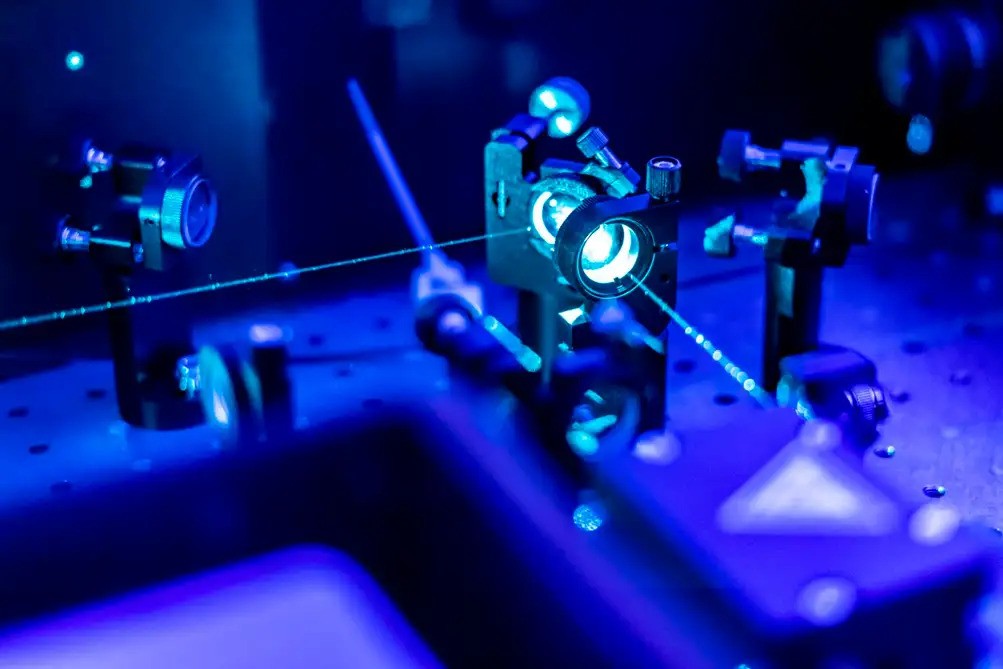In a groundbreaking experiment that challenges our understanding of physics, researchers have stumbled upon an extraordinary phenomenon: photons, the fundamental particles of light, appear to exit atoms before entering.
This jaw-dropping discovery was made by a team of quantum physicists at the University of Toronto, who found that photons are spending a “negative amount of time” with atoms. Such a revelation not only adds a new layer of mystery to quantum mechanics but also has scientists questioning the very fabric of reality.
A Mind-Boggling Observation
“It sounds crazy, I know,” admitted Aephraim Steinberg, one of the lead researchers on the project, in a post on X. His team’s data, however, reveals something deeply perplexing: under specific conditions, photons seem to spend less than zero time interacting with atoms. This finding further complicates the already mystifying world of quantum mechanics, where time and space frequently defy conventional rules.

Typically, light behaves in a predictable way. When photons enter a material, they interact with the atoms within it. The atoms absorb energy from the photons, pushing electrons to higher energy levels—a process known as atomic excitation. Afterward, the photons are re-emitted, returning the atoms to their normal state. This sequence is well-understood by physicists: light enters, atoms absorb, and then light exits.
However, quantum physics often upends such norms. When Steinberg and his team directed photons through a cloud of ultracold rubidium atoms, they observed something baffling. Rather than simply passing through, the photons seemed to exit the cloud before even entering it—almost as if they’d jumped ahead.
“We were completely surprised,” said Josiah Sinclair, a quantum physicist.
“A negative time delay may seem paradoxical, but what it means is that if you built a ‘quantum clock’ to measure how long an atom spends in the excited state, the clock hand would move backward rather than forward.”
The Puzzle of Negative Time
This phenomenon isn’t your typical Hollywood-style time travel. Instead, it’s a mind-bending consequence of how quantum particles interact with matter. In these experiments, the photons appeared to leave the atomic cloud before the atoms could fully absorb them, as if bending time just enough to defy logic.

In an X thread, Sinclair illustrated the concept with a vivid analogy: imagine a chess clock. At the end of a game, each player’s clock indicates how much time they spent on their moves. Now, imagine one clock reads a negative time value, suggesting the player somehow took less than zero time for their moves. This is, essentially, what the team observed with their photons.
In the thread, Sinclair clarified that “negative time” doesn’t imply rewinding the past or peeking into the future. In the quantum world, particles can occupy a “superposition,” allowing multiple outcomes to occur simultaneously. Consequently, events may appear out of sequence or even in reverse from our everyday perspective.
Rewriting the Rules of Light
The experiment aimed to determine how long photons take to excite atoms, typically a straightforward measurement yielding positive values in classical physics. But in quantum mechanics, the rules shift dramatically. The team used a technique called the cross-Kerr effect to measure phase shifts in a secondary beam of light, allowing them to determine how long the rubidium atoms remained excited.
The results were staggering: under specific conditions, photons exhibited a negative transit time through the atomic cloud. Repeated tests and carefully synchronized light pulses confirmed the finding. According to Steinberg, “When you see a transmitted photon, you can’t know exactly how it behaved,” Steinberg explained told science journalist Manon Bischoff. “In some cases, the photon might ignore the atom entirely. In other cases, it interacts, excites the atom, and then leaves. But in quantum mechanics, both outcomes can happen at the same time.”
What Does This Mean for Quantum Physics?
While this discovery won’t lead to a time machine, it holds potential for quantum computing. Quantum computers utilize particles like photons to process and carry information. Understanding how photons interact with atoms, even in instances of reversed timing, could pave the way for more efficient quantum systems. By fine-tuning these delicate interactions, researchers might develop stable quantum circuits—the backbone of quantum computing.

Currently, the research team is focused on comprehending the basic physics of this unusual interaction. Their findings open up profound questions about the nature of light and matter within the quantum domain. There is even speculation about whether this phenomenon could be replicated in other systems.
Despite the enthusiasm, some scientists urge caution. Andrew Jordan, a quantum physicist at Chapman University, lauded the experiment’s ingenuity but called for further testing. “Time is what is measured by a clock,” he said, quoting Einstein, and emphasized that this indirect way of measuring time requires more validation.
Negative time remains an enigma—one that pushes the boundaries of our understanding. In the quantum universe, where reality often defies logic, sometimes the future may already be written in the past.



